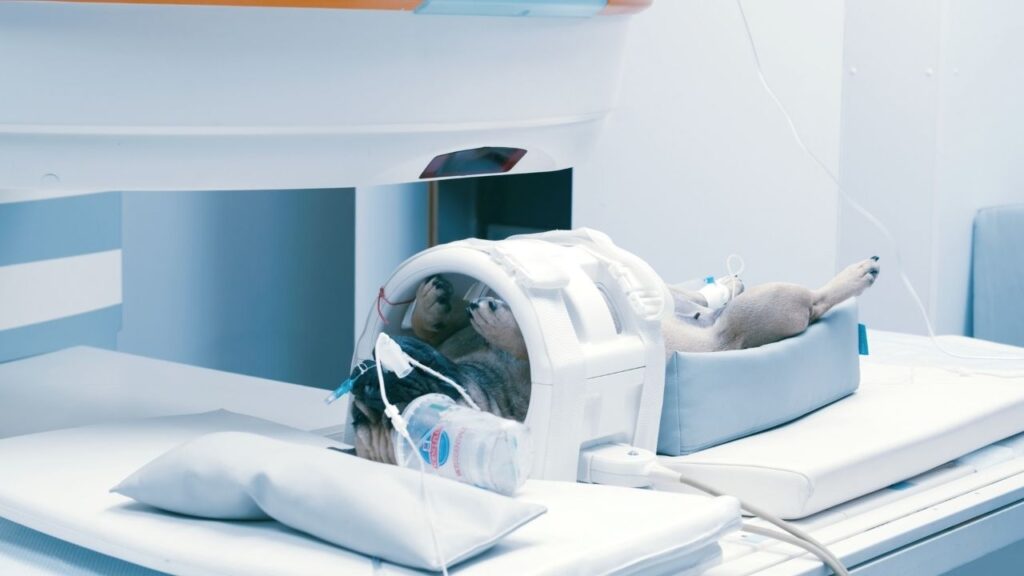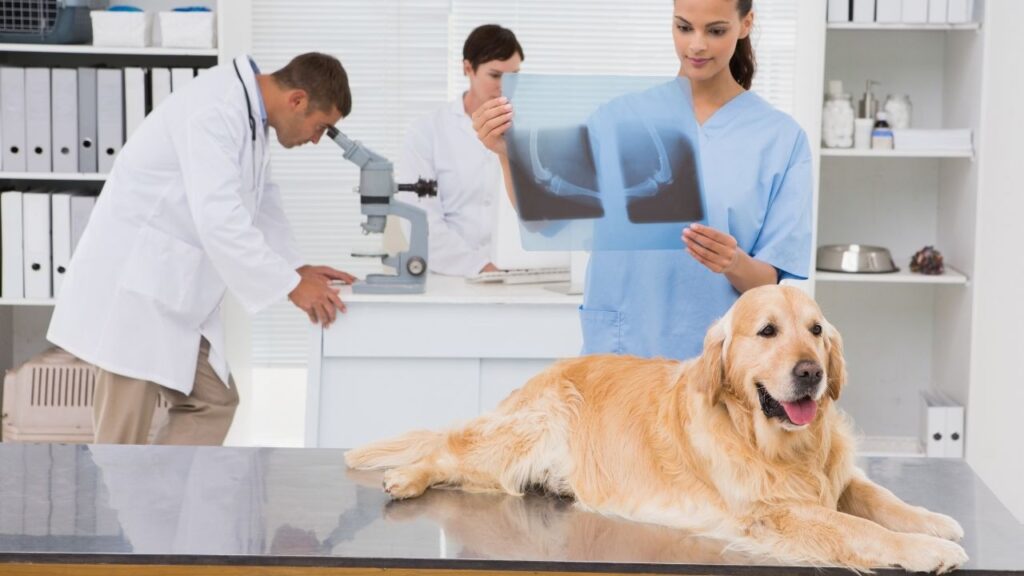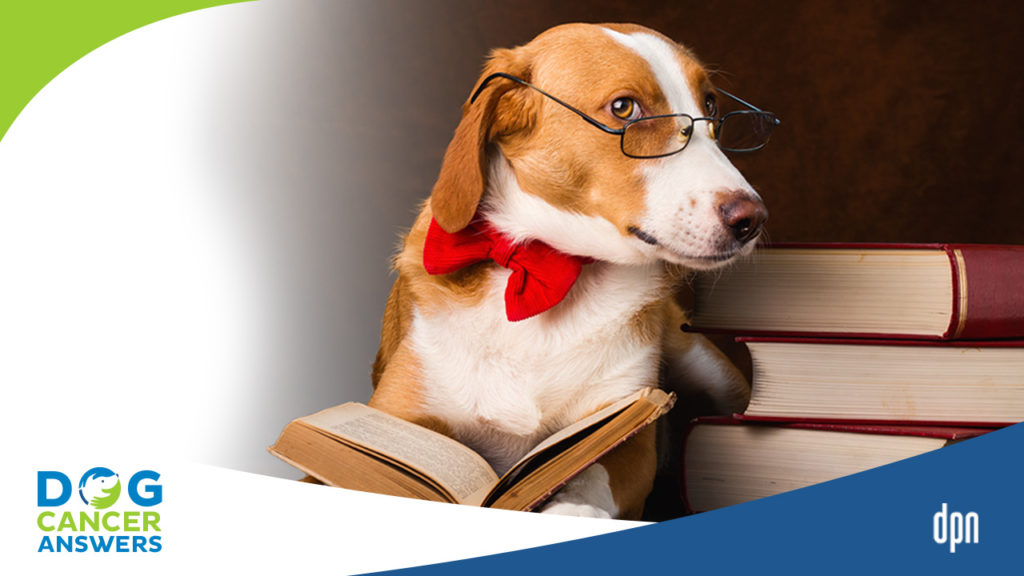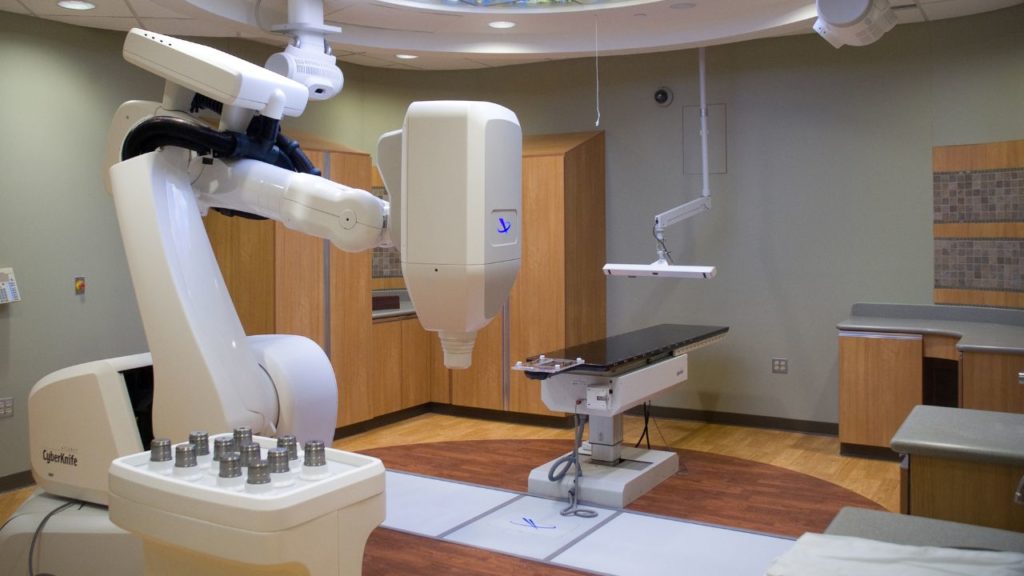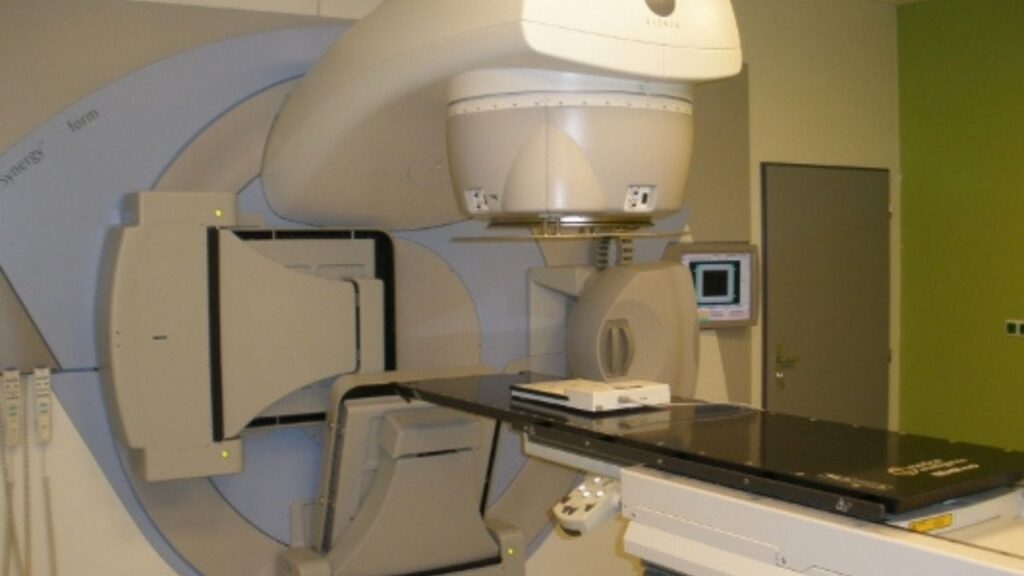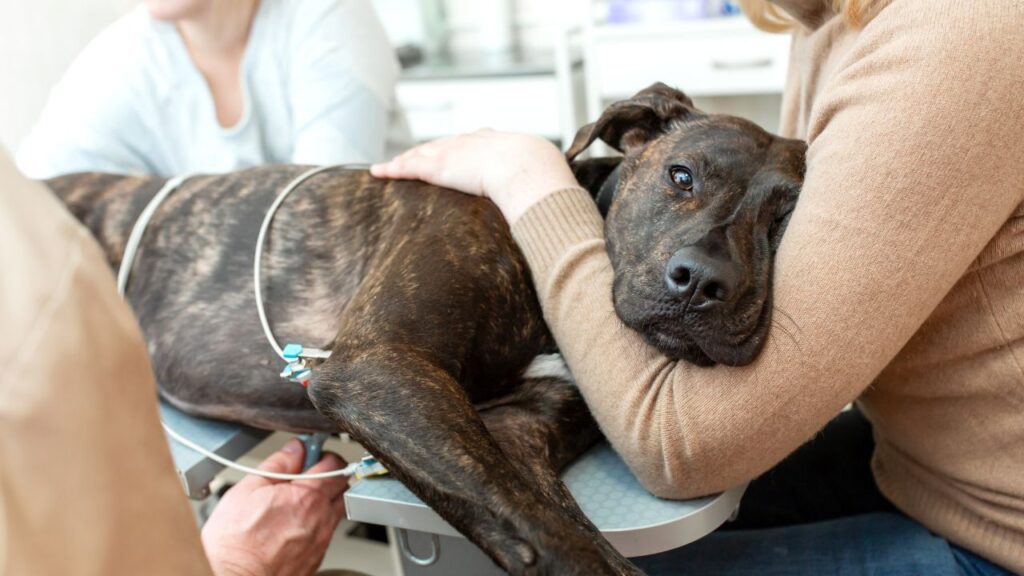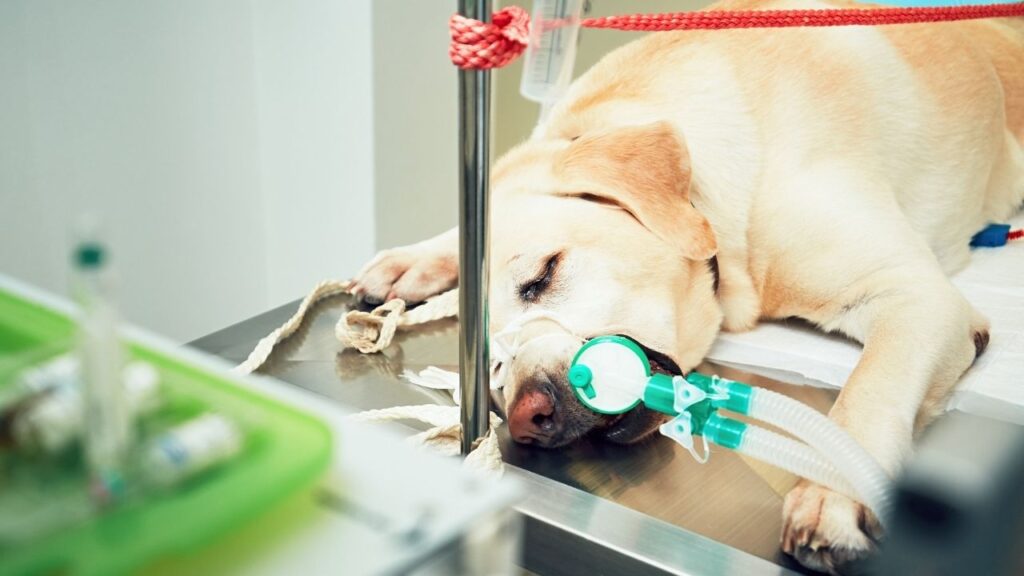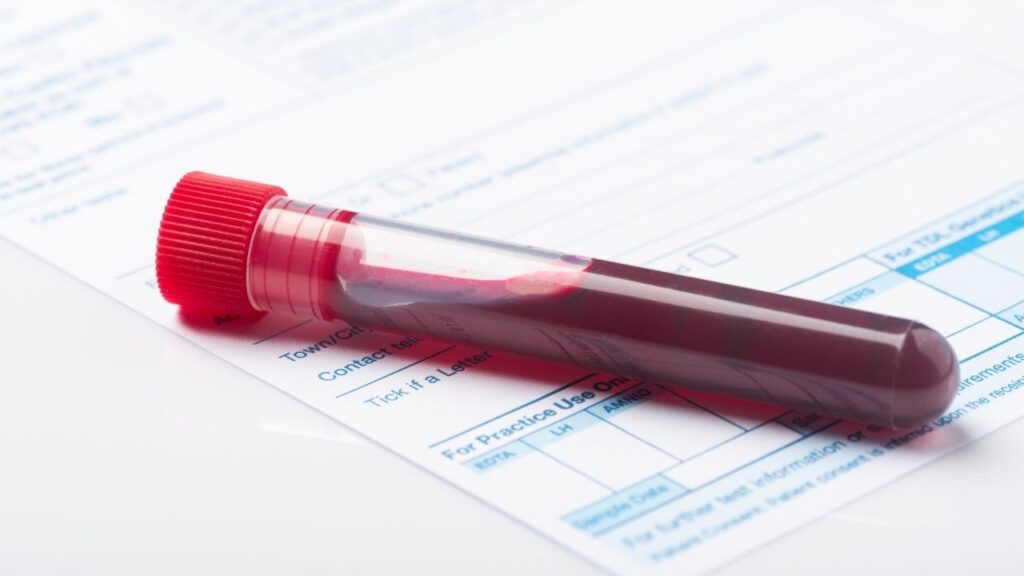A computed tomography (CT Scan) is an incredibly useful tool that can provide detailed information to help you make the best decisions for you and your dog.
Key Takeaways
- CT scans are very safe for dogs, but do require sedation or anesthesia.
- CT scans are used in veterinary medicine to look for tumors, fractures, damage to blood vessels, pulmonary fibrosis… pretty much anything that we might want to see in the body without having to do surgery.
- A CT scan on a dog generally takes only 10-15 minutes, with some extra time beforehand while the dog is put under anesthesia and a little time after while the dog recovers and wakes up.
- Dogs get CT scans in the same machines as people do, just at veterinary hospitals instead of human hospitals. Dogs do need to be sedated or under anesthesia so that they will stay still.
- There are no side effects from a dog CT scan, but your dog may experience side effects from the anesthesia just like with any other procedure.
- In some ways CT scans are better than MRI for dogs because they are faster and less expensive. On the other hand, MRI gives more detailed images and may reveal problems that don’t show up on CT.
How CT Scans Work
Computed tomography, commonly known as a CT scan, is a type of imaging. During the scan a series of x-rays are taken from different angles around the area of interest, and then digital processing combines all of the x-rays together.3
The result is detailed cross-sectional images, or “slices,” of the body, including everything from bones and blood vessels to organs and ligaments. The veterinarian can use these images to see exactly where the edges of a tumor are, what tissues it is connected to, and if there are smaller metastatic tumors present.
What Happens in a Dog CT Scan
A CT scan is like an x-ray – it is fast and uses radiation to make images of the internal structures of the body.
CT scans are much more sensitive and detailed than x-rays, however, and can help get a clearer picture of what is happening inside the body. The information gained from a CT scan can help you and your veterinarian understand your dog’s prognosis, develop a treatment plan, and make the most informed decisions for your dog.
Your dog must remain absolutely still during a CT scan, so general anesthesia or heavy sedation is required.1 Once your dog is asleep, he is positioned in the machine so the scan can be performed. The scan itself is not long – it can be completed in as little as 15 minutes.
Once the scan is complete, your dog will be allowed to wake back up. Recovery after anesthesia for a CT scan is usually much quicker than recovery after surgery, because the dog is under for less time and does not need to be as “deep” since the scan itself is painless.
Anesthesia for dogs doesn’t have to be scary. One weird nap for your dog, one amazing opportunity for vets to provide lifesaving medical care. Vet tech specialist Tasha McNerney explains in this episode of Dog Cancer Answers.
When a Dog CT Scan is Recommended
Your veterinarian may recommend a CT scan as part of the diagnostic process, to look for metastatic disease (cancer spread), or to help with treatment planning.
CT can be very useful for finding cancers of the head affecting the brain, nasal passages, and mouth.2 These areas can be difficult to evaluate on a basic x-ray, but CT allows the vet to look at each layer independently.
A CT scan is also much more sensitive than x-rays for detecting smaller masses. This makes it more accurate in detecting if a cancer has spread to other internal organs or invaded nearby structures.2 This information helps with staging and treatment planning, as well as forming a more accurate prognosis.
For treatment planning, a CT scan can provide invaluable information. If surgery is being considered, it allows your surgeon to visualize how extensive the tumor is and what structures are involved. This can help determine if surgery is recommended or likely to be successful.
If radiation is part of the treatment plan, a CT scan is usually required. The scan is used by a radiation oncologist to program the radiation machine so that it will target the tumor and minimize administration of radiation to healthy tissues.2
Dog Cancers CT Scans Are Commonly Used For
A CT scan is usually recommended for any cancer that is likely to spread to internal organs. This quick and thorough test allows to see even small tumors that have metastasized from the original tumor.
It is especially helpful for cancers of the mouth, nose, and head, as x-rays for these areas are difficult to read due to many overlapping structures in these areas.
Confused about dog cancer staging and grading, and not sure if the tests are worth the cost? Oncologist Brooke Britton explains the ins and outs in this episode of Dog Cancer Answers.
How to Get the Best Results
Since general anesthesia or heavy sedation is required for a CT scan, you will need to fast your dog before they can undergo anesthesia. Ask your veterinary team how long your dog should fast, and make sure the whole family knows not to feed Fido breakfast!
If the CT scan is for surgical planning and your dog is expected to go into surgery right after the CT, your veterinarian will inform you of medications and supplements to stop giving before surgery. This is especially important for anti-coagulant (blood thinning) medications – you don’t want excessive bleeding during surgery.1
Other supplements and medications that are generally recommended to stop before surgery include:
- NSAIDs and Adequan
- Omega-3 fatty acids, fish oil, or krill oil
- Curcumin or turmeric
- Garlic supplements
- Maritime pine bark
- Apocaps
- Bromelain
- Wobenzyme-M
- Skullcap
Home Care After Dog CT Scan
Since anesthesia is required for a CT scan, you may see anesthesia-related issues for a day or two after the scan. Your dog may be groggy, wobbly, not want to eat, or have GI upset.
To prepare for nausea, most veterinarians will send you home with anti-nausea medications to have on hand in case it is needed.
For vomiting, diarrhea, or constipation it is helpful to have some specific foods on hand:
- Bland prescription diet
- Plain boiled chicken and rice
- Canned pumpkin or another fiber source
If your dog needs medications after the procedure, some special foods (like pill pockets, cheese, deli meat, etc.) may be helpful for getting your dog to take her medications.
If your dog has surgery immediately after the CT scan, you will be given specific instructions for how to care for her during recovery. Most dogs need to have their movement restricted for at least 10-14 days while the incision heals. A quiet place to put a crate or pen will help your dog rest during the recovery period.
Follow Up
Follow up will vary depending on the purpose of the CT scan and any treatment that occurred at the same time.
If the CT scan was for diagnostic purposes only, follow up will depend on your dog’s diagnosis and your treatment plan decisions.
If the CT scan was for surgical planning and surgery was performed at the same time, follow up will also depend on the outcome of the surgery and the treatment plan going forward. You can also expect an appointment for suture removal and any needed bandage changes.
When to Not Do a Dog CT Scan
Since anesthesia is required, CT scans are not appropriate for dogs that are not healthy enough to undergo anesthesia.
Because CT scans can be expensive, if finances are tight, it may be recommended to forego a CT scan in favor of other tests or treatments. This is especially true if the CT scan is unlikely to change the outcome. For example, a dog with osteosarcoma is presumed to have microscopic metastasis by the time a tumor is noticed in the bone, so the recommended course of treatment is unlikely to change based on the results of a CT scan.
Give yourself grace. That is Dr. Barrow’s top advice if you can’t afford expensive treatments for your dog’s cancer. Learn more in this episode of Dog Cancer Answers.
Where to Get Dog CT Scans
CT scans require highly specialized machines and are usually only available at veterinary specialty hospitals and teaching hospitals (veterinary schools).
Safety and Side Effects
The CT scan is safe and the test itself has no side effects. However, since anesthesia is required, side effects from anesthesia are possible, and the patient should be monitored.
CT Scan Cost for Dogs
The cost for a CT scan will vary between $800-$2500 depending on geographic location and the area of the body being scanned (a larger area will take longer to scan).
If this is out of reach for you, there are some options to help pay for this important procedure:
- Many veterinary hospitals accept CareCredit, a credit card designed specifically for healthcare expenses including veterinary bills. There are usually special financing options with 0% interest for a period of time – usually 6, 9, or 12 months. If you make payments on time each month and pay off the total before the end of the special financing period, you will pay no interest.
- Pet insurance is another option for offsetting the costs of pet care and there are many companies and types of plans to choose from. It is important to note, however, that few plans cover pre-existing conditions, so your dog must already be enrolled before getting sick for the plan to cover expenses associated with her cancer.
- Assistance funds. The Humane Society of the United States has a comprehensive list of assistance funds available to pet owners who are struggling to afford medical care for their pets.
- Some veterinary hospitals have payment plans available, especially if you are a long-term client with a proven payment history. Ask your vet if this is an option for you.
- Dressler D, Ettinger S. The Dog Cancer Survival Guide: Full Spectrum Treatments to Optimize Your Dog’s Life Quality and Longevity. Maui, HI: Maui Media, LLC; 2011.
- Hansen KS, Kent MS. Imaging in Non-neurologic Oncologic Treatment Planning of the Head and Neck. Front Vet Sci. 2019;6:90. Published 2019 Mar 28. doi:10.3389/fvets.2019.00090
- Lattimer JC. Computed Tomography in Animals. Merck Veterinary Manual. https://www.merckvetmanual.com/clinical-pathology-and-procedures/diagnostic-imaging/computed-tomography-in-animals. Published January 10, 2023. Accessed January 18, 2023.
Topics
Did You Find This Helpful? Share It with Your Pack!
Use the buttons to share what you learned on social media, download a PDF, print this out, or email it to your veterinarian.
